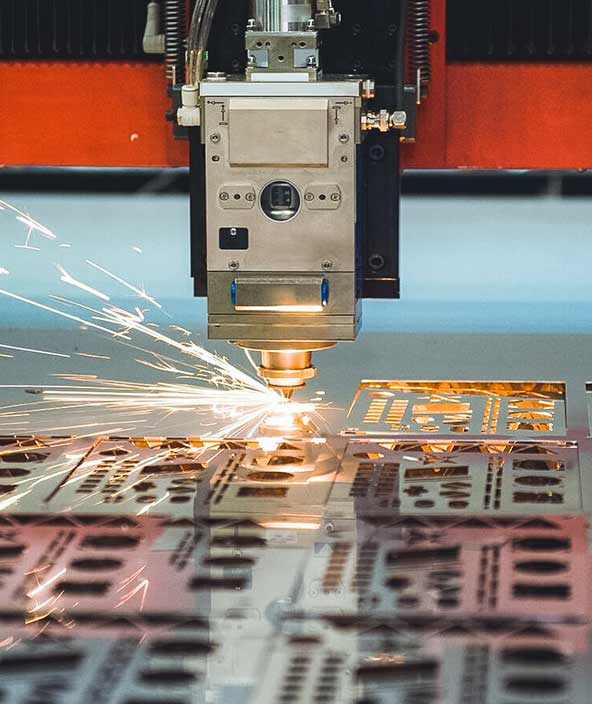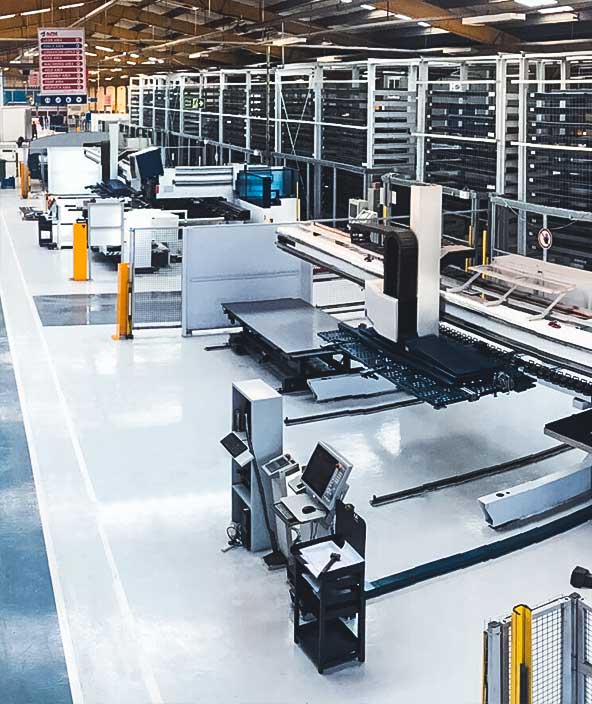Sheet metal fabrication
Reduce inventory and maximise raw material utilisation with CAD CAM for sheet metal fabrication.

The cutting edge of sheet metal fabrication
See how RADAN CAD CAM for sheet metal fabrication helps maximise raw material sheet utilisation and drive productivity.
Ready to learn more?
Sheet metal fabrication is an integral part of manufacturing in most major industries including automotive, aerospace and consumer products. Hexagon’s CAD CAM solutions for sheet metal fabrication enable metalworkers to efficiently design and produce sheet metal parts with minimum material waste.
Overview
Sheet metal fabrication is the process of creating metal parts and structures from raw material metal stock such as sheets of steel or other materials. Sheet metal fabricators use a number of fabrication techniques, including laser cutting, punching, nesting, bending, forming and welding, to make metal parts for final assembly.
To be competitive in sheet metal fabrication, manufacturers must be able to maximise raw material sheet utilisation. This relies on nesting efficiency – the ability to lay out cutting patterns on the raw material to minimise wastage.
Hexagon’s CAD CAM solutions for sheet metal fabrication provide a complete toolset for manufacturers to design and execute sheet metal processes from laser cutting, punching, nesting, bending and forming. Automated nesting tools help ensure the best possible raw material sheet utilisation to minimise material expenditure and reduce the need for stockholding.






